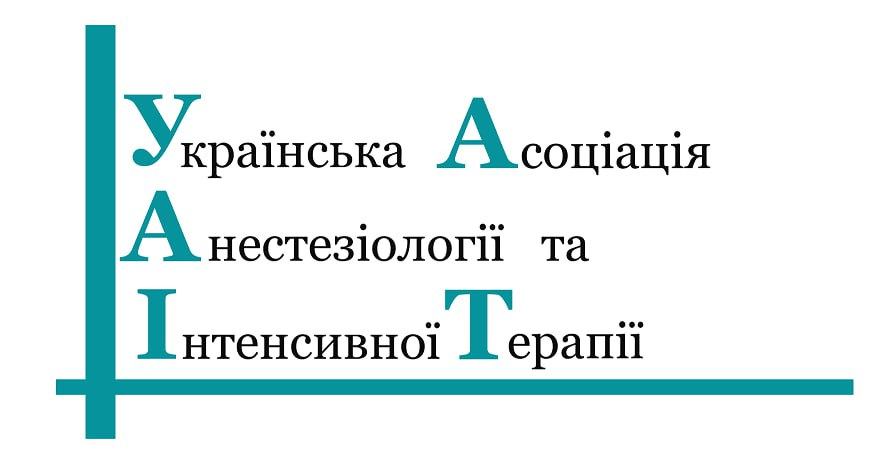Патофізіологічне обгрунтування слабкості відлучення від респіратора у пацієнтів, яким проводять тривалу штучну вентиляцію легень (огляд літератури, власні спостереження)
DOI:
https://doi.org/10.25284/2519-2078.4(57).2011.108619Ключові слова:
відлучення від респіратора, тривала штучна вентиляція легень, проба спонтанного диханняАнотація
Висвітлено основні патофізіологічні причини слабкості відлучення від респіратора пацієнтів, яким проводили тривалу штучну вентиляцію легень. На основі даних літератури та результатів власних досліджень запропоновано систематизований підхід до вирішення проблеми відлучення від респіратора залежно від причини слабкості відлучення. Наведено результати власних досліджень, які свідчать про перевагу трахеостомії порівняно з тривалою транслярингеальною інтубацією трахеї при відлученні від респіратора пацієнтів, яким проводили тривалу штучну вентиляцію легень.Посилання
Cabello В, Thille AW, Roche-Campo F, et al. (2010) Physiological comparison of three spontaneous breathing trials in difficult-to-wean patients. Intens Care Med; 36: 1171-1179.
Sassoon SH, Mahutte CK. (1995) What you need to know about the ventilator weaning. Respsr Care; 40 (3): 249-256.
Coplin WM, Pierson DJ, Cooley KD, et al. (2000) Implications of extubation delay in brain-injured patients meeting standard weaning criteria. Am J Respir Crit Care Med; 161: 1530-1536.
Brochard L. (2005) Pressure support is the preferred weaning method. As presented at the 5th International Consensus Conference in Intensive Care Medicine: Weaning from Mechanical Ventilation. Hosted by ERS, ATS, ES1CM, SCCM and SRLF; Budapest, April 28-29, 2005. http://www.ersnet.org/ers/lr/browse/default.aspx?id=2814
Esteban A, Alia I, Tobin MJ, et al. (1999) Effect of spontaneous breathing trial duration on outcome of attempts to discontinue mechanical ventilation. Spanish Lung Failure Collaborative Group. Am J Respir Crit Care Med; 159: 512-518.
Vallverdu I, Calaf N, Subirana M, et al. (1998) Clinical characteristics, respiratory functional parameters, and outcome of a two-hour T-piece trial in patients weaning from mechanical ventilation. Am J Respir Crit Care Med; 158: 1855-1862.
Boles J-M, Bion J, Connors A, et al. (2007) Weaning from mechanical ventilation. Eur Respir J; 29: 1033-1056.
Carlucci A, Richard JC, Wysocki M, Brochard L. (2001) Noninvasive versus conventional mechanical ventilation. An epidemiologic survey. Am J Respir Crit Care Med; 163: 874-880.
Caruso P, Friedrich C, Denari S, et al. (1999) The unidirectional valve is the best method to determine maximal inspiratory pressure during weaning. Chest; 115: 1096-1101.
Leung P, Jubran A, Tobin M. (1997) A comparison of assisted ventilator modes on triggering, patient effort and dyspnoea. Am J Respir Crit Care Med; 155: 1940-1948.
Torres A, Gatell JM, Aznar E, et al. (2001) Re-intubation increases the risk of nosocomial pneumonia in patients needing mechanical ventilation. Am J Respir Crit Care Med; 152:137-141.
Salam A, Tilluchdharry L, Amoateng-Adjepong Y, Manthous CA (2004) Neurologic status, cough, secretions and extubation outcomes. Intensive Care Med; 30: 1334-1339.
Epstein SK, Ciubotaru RL (1998) Independent effects of etiology of failure and time to reintubation on outcome for patients failing extubation. Am J Respir Crit Care Med; 158: 489-493.
Straus C, Louis B, Isabey D, et al. (1998) Contribution o f the endotracheal tube and the upper airway to breathing workload. Am J Respir Crit Care Med; 157: 23-30.
Дубров C.O. (2011) Порівняння ефективності та безпеки відлучення від респіратора у пацієнтів з трансларингеальною інтубацією та трахеостомою після проведення тривалої штучної вентиляції легень. Біль, знеболювання і інтенсивна терапія, №3, с. 31-35.
Pinsky MR (2000) Breathing as exercise: the cardiovascular response to weaning from mechanical ventilation. Intensive Care Med; 26: 1164-1166.
Jubran A, Mathru M, Dries D, et al. (1998) Continuous recordings of mixed venous oxygen saturation during weaning from mechanical ventilation and the ramifications thereof. Am J Respir Crit Care Med; 158: 1763-1769.
Mohsenifar Z, Hay A, Hay J, et al. (1993) Gastric intraluminal pH as a predictor of success or failure in weaning patients from mechanical ventilation. Ann Intern Med; 119: 794-798.
Kress JP, Pohlman AS, О ’Connor ME, Hall JB (2000) Daily interruption of sedative infusions in critically ill patients undergoing mechanical ventilation. N Engl J Med; 342: 1471-1477.
Epstein SK, Ciubotaru RL (1998) Independent effects of etiology of failure and time to reintubation on outcome fo r patients failing extubation. Am J Respir Crit Care Med; 158: 489-493.
Spitzer AR, Giancarlo T, Maher L, et al. (1992) Neuromuscular causes of prolonged ventilator dependency. Muscle Nerve; 15: 682- 686.
De Jonghe B, Bastuji-Garin S, Sharshar T, et al. (2004) Does ICUacquired paresis lengthen weaning from mechanical ventilation? Intens Care Med; 30: 1117-1121.
Bolton CF, Gilbert JJ, Hahn AF, Sibbald WJ (1984) Polyneuropathy in critically ill patients. J Neurol Neurosurg Psychiatry; 47: 1223-1231.
Couturier JC, Robert D, Monier P (1984) Polyn?vrites compliquant des s?jours prolong?s en r?animation. [Idiopathic polyneuropathy in 11 patients under prolonged intensive care.]. Lyon Med; 252: 247- 249.
Witt NJ, Zochodne DW, Bolton CF, et al. (1991) Peripheral nerve function in sepsis and multiple organ failure. Chest; 99: 176-184.
Campellone JV, Lacomis D, Kramer DJ, et al. (1998) Acute myopathy after liver transplantation. Neurology;50: 46-53.
Garnacho-Montero J, Madrazo-Osuna J, Garcia-Garmendia JL, et al. (2001) Critical illness polyneuropathy: risk factors and clinical consequences. A cohort study in septic patients. Intensive Care Med; 27: 1288-1296.
Bercker S, Weber-Carstens S, Maria D, et al. (2005) Critical illness polyneuropathy and myopathy in patients with acute respiratory distress syndrome. Crit Care Med; 33: 711-715.
De Jonghe В, Sharshar T, Lefaucheur JP, et al. (2002) Paresis acquired in the intensive care unit: a prospective multicenter study. JAMA;288: 2859-2867.
Kleyweg RP, van der Meche FG, Meulstee J. (1988) Treatment of Guillain-Barre syndrome with high-dose gammaglobulin. Neurology; 38: 1639-1641.
Bednarik J, Lucas Z, Vondracek P. (2003) Critical illness polyneuropathy: the electrophysiological components of a complex entity. Intensive Care Med; 29: 1505-1514.
Maher J, Rutledge F, Remtulla H, et al. (1995) Neuromuscular disorders associated with failure to wean from the ventilator. Intensive Care Med; 21: 737-743.
Zifko UA, Zipko HT, Bolton CF (1998) Clinical and electrophysiological findings in critical illness polyneuropathy. J Neurol Sci; 159: 186-193.
Yang KL, Tobin MJ (1991) A prospective study of indexes predicting the outcome of trials o f weaning from mechanical ventilation. N Engl J Med; 324: 1445-1450.
Conti G, Montini L, Pennisi MA, et al. (2004) A prospective, blinded evaluation of indexes proposed to predict weaning from mechanical ventilation. Intensive Care Med; 30: 830-836.
Watson AC, Hughes PD, Harris L, et al. (2001) Measurement o f twitch transdiaphragmatic, esophageal, and endotracheal tube pressure with bilateral anterolateral magnetic phrenic nerve stimulation in patients in the intensive care unit. Crit Care Med; 29: 1325-1331.
Leijten FS, Harinck-de Weerd JE, Poortvliet DC, de Weerd AW (1995) The role of polyneuropathy in motor convalescence after prolonged mechanical ventilation. JAMA; 274: 1221-1225.
Fletcher SN, Kennedy DD, Ghosh IR, et al. (2003) Persistent neuromuscular and neurophysiologic abnormalities in long-term survivors of prolonged critical illness. Crit Care Med; 31: 1012-1016.
Herridge MS, Cheung AM, Tansey CM, et al. (2003) One year outcome in survivors of the acute respiratory distress syndrome. N Engl J Med; 348: 683-693.
Inouye SK, Bogardus ST, Charpentier PA, et al. (1999) A multicomponent intervention to prevent delirium in hospitalized older patients. N Engl J Med; 340: 669-676.
Lin S-M, Liu C-Y, Wang C-H, et al. (2004) The impact of delirium on the survival of mechanically ventilated patients. Crit Care Med; 32: 2254-2259.
Ely EW, Shintani A, Truman B, et al. (2004) Delirium as a predictor of mortality in mechanically ventilated patients in the intensive care unit. JAMA; 291: 1753-1762.
Bergbom-Engberg I, Haljamae H (1989) Assessment of patients’ experience of discomforts during respirator therapy. Crit Care Med; 17: 1068-1072.
Pochard F, Lanore JJ, Bellier F, et al. (1995) Subjective psychological status of severely ill patients discharged from mechanical ventilation. Clin Intensive Care; 6: 57-61.
Chian LL (2003) Description of anxiety levels by individual differences and clinical factors in patients receiving mechanical ventilatory support. Heart Lung; 32: 275-282.
Smoller JW, Pollack MH, Otto MW, et al. (1996) Panic, anxiety, dyspnoea, and respiratory disease. Theoretical and clinical considerations. Am J Respir Crit Care Med; 154: 6-17.
Rotondi AJ, Chelluri L, Sirio C, et al. (2002) Patients’ recollections of stressful experiences while receiving prolonged mechanical ventilation in an intensive care unit. Crit Care Med; 30: 746-752.
Cooper AB, Thomsley KS, Young GB, et al. (2000) Sleep in critically ill patients requiring mechanical ventilation. Chest; 117: 809-818.
Hoist JD, Barnett RB, Lohmeier HL, et al. (2003) Clinical ventilator adjustments that improve speech. Chest; 124: 1512-1521.
Annane D, Sebille V, Charpentier C, et al. (2002) Effect of treatment with low doses of hydrocortisone and fludrocortisone on mortality in patients with septic shock. JAMA; 288: 862-871.
Amaya-Villar R, Garnacho-Montero J, Garcia-Garmendia JL, et al. (2005) Steroid-induced myopathy in patients intubated due to exacerbation of chronic obstructive pulmonary disease. Intensive Care Med; 31: 157-161.
Van Den Berghe G, Wouters P, Weekers F, et al. (2001) Intensive insulin therapy in critically ill patients. N Engl J Med; 345: 1359-1367.
O ’Brien JM Jr, Welsh CH, Fish RH, et al. (2004) National Heart, Lung, and Blood Institute Acute Respiratory Distress Syndrome Network. Excess body weight is not independently associated with outcome in mechanically ventilated patients with acute lung injury. Ann Intern Med; 140: 338-345.
Tremblay A, Bandi V (2003) Impact of body mass index on outcomes following critical care. Chest; 123: 1202-1207.
Vassilakopoulos T, Petrof BF (2004) Ventilator-induced diaphragmatic dysfunction. Am J Respir Crit Care Med; 169: 336-341.
Sassoon CS, Caiozzo VJ, Manka A, Sieck GC (2002) Altered diaphragm contractile properties with controlled mechanical ventialtion. J Appl Physiol; 92: 2585-2595.
Zergeroglu MA, McKenzie MJ, Shanely RA, et al. (2003) Mechanical ventilation induced oxidative stress in the diaphragm. J Appl Physiol; 95: 1116-1124.
Nathens AB, Neff MJ, Jurkovich GJ, et al. (2002) Randomised, prospective trial of antioxidant supplementation in critically ill surgical patients. Ann Surg; 236: 814-822.
Heyland DK, Dhaliwal R, Suchner U, Berger MM (2005) Antioxidant nutrients: a systematic review of trace elements and vitamins in the critically ill patient. Intensive Care Med; 31: 327-337.
Hebert PC, Blajchman MA, Cook DJ, et al. (2001) Transfusion Requirements in Critical Care Investigators, Canadian Critical Care Trials Group. Do blood transfusions improve outcomes related to mechanical ventilation? Chest; 119: 1850-1857.
##submission.downloads##
Опубліковано
Як цитувати
Номер
Розділ
Ліцензія
Авторське право (c) 2011 С. О. Дубров

Ця робота ліцензується відповідно до Creative Commons Attribution-NonCommercial 4.0 International License.
Автори, які публікуються у цьому журналі, погоджуються з наступними умовами:
a. Автори залишають за собою право на авторство своєї роботи та передають журналу право першої публікації цієї роботи на умовах ліцензії Creative Commons Attribution-NonCommercial 4.0 International License, котра дозволяє іншим особам вільно розповсюджувати опубліковану роботу з обов'язковим посиланням на авторів оригінальної роботи та першу публікацію роботи у цьому журналі.
b. Автори мають право укладати самостійні додаткові угоди щодо неексклюзивного розповсюдження роботи у тому вигляді, в якому вона була опублікована цим журналом (наприклад, розміщувати роботу в електронному сховищі установи або публікувати у складі монографії), за умови збереження посилання на першу публікацію роботи у цьому журналі.
c. Політика журналу дозволяє і заохочує розміщення авторами в мережі Інтернет (наприклад, у сховищах установ або на особистих веб-сайтах) рукопису роботи, як до подання цього рукопису до редакції, так і під час його редакційного опрацювання, оскільки це сприяє виникненню продуктивної наукової дискусії та позитивно позначається на оперативності та динаміці цитування опублікованої роботи (див. The Effect of Open Access).








